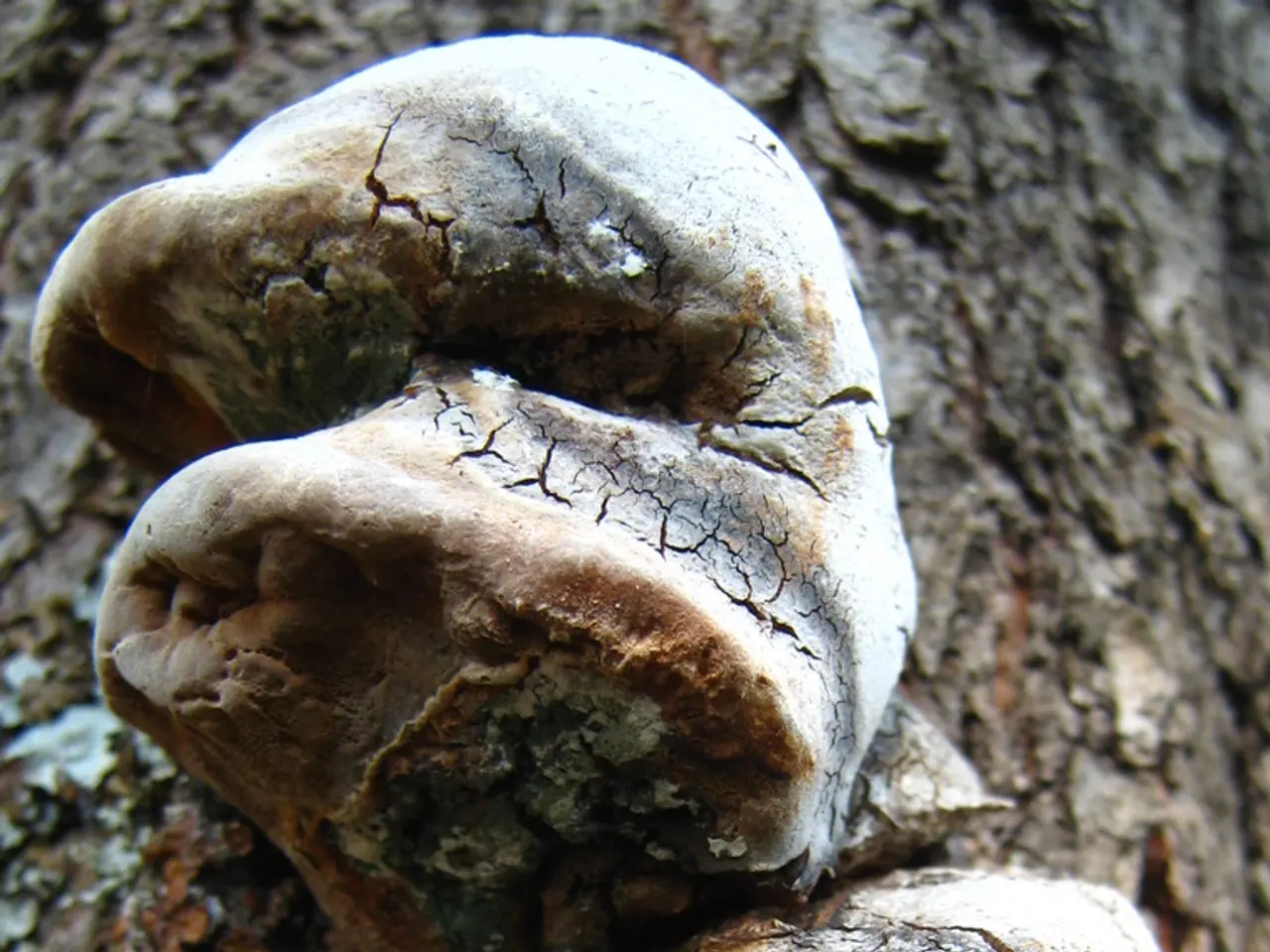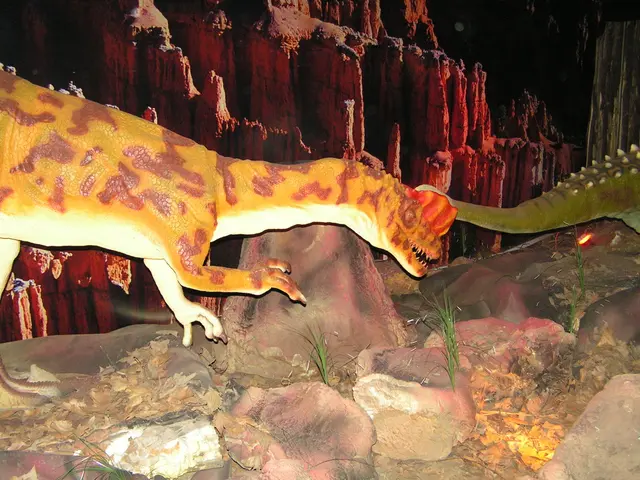Deadly implications of the 'zombie fungus' infecting limbs
In the heart of a graveyard on Halloween night, a chilling scene unfolds as a dense fog rolls in, covering the tombstones. Amidst the eerie atmosphere, a peculiar sight catches the eye - a putrid-looking hand-like object, not a remnant of a long-forgotten soul, but a fungus known as Dead man's fingers (Xylaria polymorpha).
This unique fungus, belonging to the genus *Xylaria* within the Ascomycota division, is easily recognisable by its distinctive fruiting bodies that resemble charred or burnt wood, often club-shaped or fingerlike. The Latin name 'polymorpha' means 'many shapes', reflecting the fungus's changing appearance as it matures.
Dead man's fingers do not partake in the macabre act of decomposing dead bodies, but rather dead wood. They play a vital role in forest ecosystems by decomposing dead wood and contributing to nutrient cycling. This saprotrophic lifestyle helps break down complex organic matter in forests, which is essential for soil health.
The fungus lives for over a year, maintaining its spore dispersal capability throughout this time. It reproduces through both asexual and sexual means. Asexual reproduction produces spores called conidia, which are released from the surface of the Dead man's fingers in spring. Sexual reproduction, on the other hand, produces spores called ascospores. Fusion of an ascospore from one parent with another creates a new, genetically different fungus.
As an ascomycete, Dead man's fingers release their spores from tiny sacs (asci) located on the surface of its fruiting bodies. These spores are disperse through a hole at the top of the Dead man's fingers, allowing them to spread and colonise new woody substrates.
The search results do not provide specific information on the toxicity of Xylaria polymorpha to humans or animals, nor detailed data on its direct impact on invertebrates. However, many wood-decomposing fungi, including some Xylaria species, produce secondary metabolites that can deter or affect invertebrates such as wood-boring insects or other mycophagous species. This might imply some ecological interactions, possibly including toxicity or deterrence, but no direct evidence or specifics are given in the sources found.
While Dead man's fingers provide a nutrient-rich environment for invertebrates, it is important to note that consumption of Dead man's fingers can potentially be harmful to humans. Fungal infections, while a growing threat, do not turn humans into zombies, as often portrayed in popular culture.
As the fog lifts and the Halloween night draws to a close, the Dead man's fingers stand tall, their dark brown to blue-black fingers up to 10cm (4in) tall, each with a pale 'nail' at the top. They sprout in clusters of three to six 'fingers' in spring, which are pale to dark grey, and by winter, they have darkened significantly.
Dead man's fingers can be found sprouting from the rotting base of broadleaved trees such as beech and oak, contributing to the decomposition of wood and the cycling of nutrients in forests. Despite their eerie appearance, these fascinating fungi play a crucial role in maintaining the health and balance of forest ecosystems.
- Research has revealed that Dead man's fingers, despite their ominous name, are not involved in the decomposition of human remains, but rather they contribute to nutrient cycling in forests by breaking down dead wood.
- In a forest ecosystem, Dead man's fingers, a saprotrophic fungus, play a vital role in health-and-wellness and fitness-and-exercise, as they help decompose dead wood, essential for soil health.
- The unique fungus Xylaria polymorpha, often found on earth, demonstrates the intricate relationship between science, nature, and technology, as it decomposes dead wood and reproduces through both asexual and sexual means.
- Mental-health awareness advocates might find it interesting to note that Dead man's fingers, despite their frightening appearance, do not cause zombification in humans, contrary to popular belief.
- Nutrition experts highlight that while Dead man's fingers provide a nutrient-rich environment for invertebrates, consumption of these fungi can potentially be harmful to humans, emphasizing the importance of understanding the contents of the food we consume.







